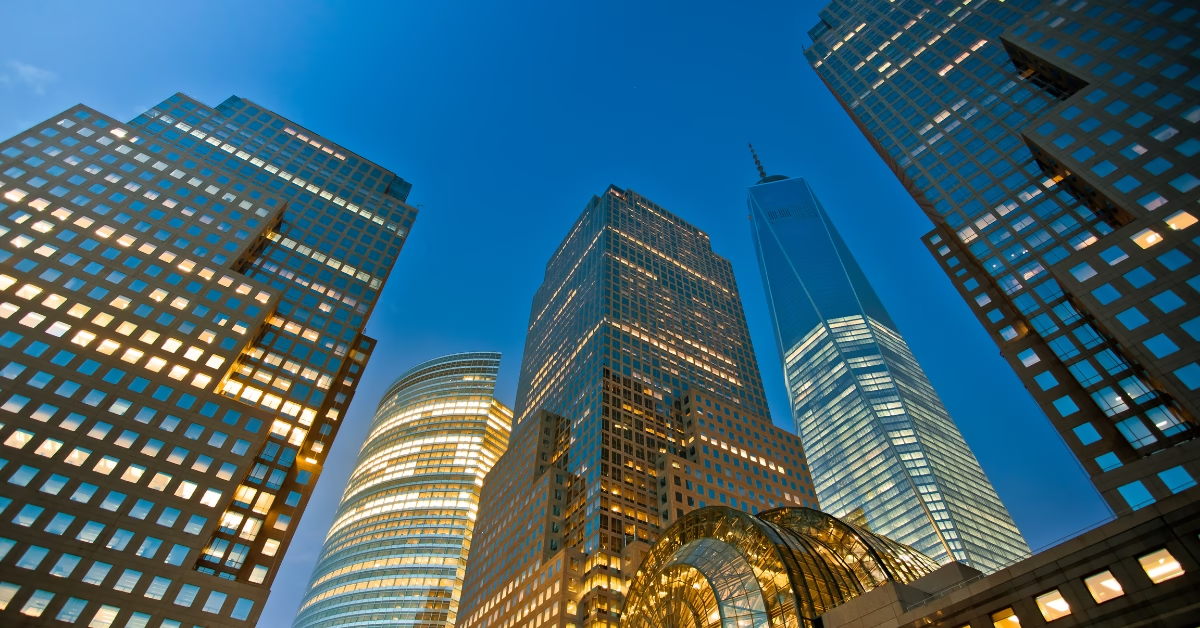In the ever-evolving landscape of architecture, skyscrapers stand as monumental testaments to human ingenuity and ambition. The phrase “top 10 big buildings in the world” encapsulates the pinnacle of architectural achievement, where design, engineering, and purpose converge. These towering structures not only redefine city skylines but also symbolize economic prowess, cultural significance, and technological advancement. As we delve into the tallest buildings of 2025, we’ll explore their unique features, historical contexts, and the visionary minds behind their creation.
1. Burj Khalifa: The Tallest Building in the World
Standing at a staggering 828 meters (2,717 feet), the Burj Khalifa in Dubai, UAE, holds the title of the world’s tallest building. Completed in 2010, this architectural masterpiece boasts 163 floors and offers unparalleled views from its observation decks. Designed by Adrian Smith of Skidmore, Owings & Merrill, the Burj Khalifa’s sleek, Y-shaped design minimizes wind resistance and maximizes space efficiency. Housing luxurious residences, corporate suites, and the Atmosphere restaurant on the 122nd floor, the Burj Khalifa is a beacon of modern engineering and opulence.
2. Shanghai Tower: A Marvel of Modern Engineering
Located in the heart of Shanghai’s Lujiazui district, the Shanghai Tower rises to 632 meters (2,073 feet), making it China’s tallest building. Completed in 2015, this 128-story skyscraper features a unique twisting design that reduces wind load and enhances structural stability. The tower’s double-layered glass façade provides insulation and energy efficiency, while its mixed-use space includes offices, retail outlets, and cultural venues. The Shanghai Tower exemplifies China’s rapid urban development and commitment to sustainable architecture.
3. Abraj Al-Bait Clock Tower: Saudi Arabia’s Iconic Landmark
Dominating the skyline of Mecca, Saudi Arabia, the Abraj Al-Bait Clock Tower stands at 601 meters (1,971 feet). Completed in 2012, this seven-tower complex houses the world’s largest clock face and serves as a central hub for Islamic pilgrims visiting the Masjid al-Haram. The tower’s Islamic-inspired architecture and strategic location underscore Saudi Arabia’s dedication to blending tradition with modernity. Its proximity to the Grand Mosque makes it a pivotal landmark in the Islamic world.
4. Ping An Finance Centre: A Symbol of China’s Rise
The Ping An Finance Centre in Shenzhen, China, reaches a height of 599 meters (1,965 feet), making it the tallest building in the city. Completed in 2017, this 115-story skyscraper houses office spaces, a hotel, and residential apartments. Its sleek design and advanced engineering reflect China’s growing influence in global finance and architecture. The Ping An Finance Centre’s integration of mixed-use spaces and sustainable technologies sets a benchmark for future skyscraper developments.
5. Lotte World Tower: South Korea’s Tallest Structure
Standing at 555 meters (1,819 feet), the Lotte World Tower in Seoul, South Korea, is the tallest building in the country. Completed in 2016, this 123-story skyscraper features a blend of retail, office, and residential spaces, along with a luxury hotel and observation decks. The tower’s aerodynamic design minimizes wind resistance, while its use of advanced materials ensures structural integrity. The Lotte World Tower symbolizes South Korea’s technological prowess and architectural ambition.
6. One World Trade Center: A Testament to Resilience
Rising to 541 meters (1,776 feet) in New York City, One World Trade Center stands as a symbol of resilience and hope. Completed in 2013, this 104-story skyscraper was built on the site of the original World Trade Center, destroyed in the 9/11 attacks. Its design incorporates advanced safety features and sustainable technologies, while its spire reaches a symbolic height of 1,776 feet, commemorating the year of American independence. One World Trade Center serves as a beacon of strength and unity for the United States.
7. Guangzhou CTF Finance Centre: A Chinese Powerhouse
The Guangzhou CTF Finance Centre, also known as the East Tower, stands at 530 meters (1,739 feet) in Guangzhou, China. Completed in 2016, this 111-story skyscraper houses a shopping mall, offices, apartments, and a hotel. Its design features stepped setbacks that create sky terraces and dramatic skylights, enhancing both aesthetics and functionality. The tower’s integration of mixed-use spaces and sustainable design elements reflects China’s commitment to innovative urban development.
8. Tianjin CTF Finance Centre: Shaping Tianjin’s Skyline
Standing at 530 meters (1,739 feet), the Tianjin CTF Finance Centre is the tallest building in Tianjin, China. Completed in 2019, this 96-story skyscraper features a unique design that tapers as it rises, reducing wind load and enhancing structural stability. The tower houses office spaces, serviced apartments, and a luxury hotel, offering panoramic views of the city. Its integration of sustainable technologies and mixed-use spaces sets a benchmark for future skyscraper developments.
9. CITIC Tower: Beijing’s Architectural Beauty
Reaching a height of 528 meters (1,732 feet), the CITIC Tower in Beijing, China, is a prominent feature of the city’s skyline. Completed in 2018, this 108-story skyscraper houses office spaces and retail outlets. Its sleek, cylindrical design minimizes wind resistance, while its use of advanced materials ensures structural integrity. The CITIC Tower’s integration of modern design and functionality reflects Beijing’s status as a global metropolis.
10. Willis Tower: Chicago’s Icon of Modernism
Formerly known as the Sears Tower, the Willis Tower in Chicago, USA, stands tall at 442 meters (1,450 feet). When completed in 1973, it was the tallest building in the world and held that title for over two decades. The tower has 110 floors and is a key part of Chicago’s skyline.
Its innovative design features a bundled tube structure, which was a new engineering method at the time. This structure allows it to withstand strong winds common in the Windy City. The Skydeck on the 103rd floor gives visitors breathtaking views and even lets them step onto a glass box overhanging the edge.
Today, Willis Tower remains one of the most visited buildings in the United States. It represents American ambition, strength, and architectural innovation. It’s not just a tall building—it’s a symbol of progress and a part of Chicago’s cultural identity.
The Role of Skyscrapers in Urban Development
Skyscrapers are more than just tall buildings. They shape the identity of cities and serve as major landmarks. In crowded cities, vertical expansion becomes a smart solution for space issues. Skyscrapers allow businesses, homes, and services to exist within a limited footprint.
Tall buildings also influence economic development. A large tower can become the center of a business district, attracting companies and tourists. Many of the top 10 big buildings in the world are also known for retail and entertainment spaces, which drive local economies.
In addition, skyscrapers affect transportation, housing, and infrastructure planning. They play a big role in how modern cities evolve. The need to support these massive structures pushes engineers and city planners to innovate, often leading to smarter and more efficient urban systems.
How Skyscrapers Are Designed: Art Meets Engineering
Designing a skyscraper isn’t just about making it tall. It’s about making it safe, beautiful, and useful. Architects and engineers work closely to plan every detail, from wind resistance to elevator speed. Each structure must withstand earthquakes, strong winds, and other natural forces.
Art is also a big part of skyscraper design. Many buildings on this list feature elegant curves, twists, or unique silhouettes. These elements aren’t just for style—they can also reduce wind pressure and increase energy efficiency.
Modern towers also use advanced materials like high-strength concrete and lightweight steel. New tools like computer modeling help design buildings faster and with more accuracy. The future of skyscrapers lies in blending creative design with smart technology.
The Most Expensive Buildings in the World
Many of the world’s tallest buildings are also some of the most expensive ever built. For example, the Abraj Al-Bait Clock Tower cost over $15 billion. The high price tags come from the advanced materials, safety systems, and luxury interiors required.
Other costs come from the technology used in construction, such as earthquake-resistant foundations, high-speed elevators, and smart building systems. In many cases, the cost also reflects the tower’s cultural or religious value.
Investing in such buildings is not just about size. It’s about impact. These buildings serve as major commercial hubs, tourist attractions, and symbols of national pride. Their value continues to grow long after construction is finished.
Sustainability and the Future of Tall Buildings
Sustainability is now a key part of skyscraper design. Builders are using materials that are better for the environment. Glass facades now feature coatings that block heat but allow in light, reducing energy use.
Many skyscrapers also include green rooftops, rainwater recycling, and solar panels. These features help reduce the building’s carbon footprint. Systems for smart lighting and ventilation also lower energy bills and increase comfort.
Future skyscrapers will likely include even more eco-friendly features. Designers are now exploring zero-energy buildings—structures that produce as much energy as they use. As cities grow, sustainability will be more important than ever.
The Future of Skyscrapers: What’s Coming Next?
As technology advances, skyscrapers will continue to reach new heights. Architects are exploring the use of AI and robotics in both design and construction. Smart materials that change shape or adapt to weather may soon become common.
Floating buildings, rotating towers, and even vertical cities are being imagined. These ideas may sound like science fiction, but some are already in development. The goal is to create buildings that serve more people and do more for the planet.
The next generation of buildings will not just be tall. They will be intelligent, adaptable, and eco-friendly. The future of architecture will blend function, form, and technology in ways we’ve never seen before.
You May Also Like: Top Healthy Protein Snacks for Energy, Weight Loss & Muscle Gain
Conclusion
The top 10 big buildings in the world showcase what humans can achieve when vision meets innovation. These skyscrapers are not just feats of height but symbols of culture, engineering, and ambition. From Dubai to New York and across Asia, these giants tell a story of progress and imagination.
As we look to the future, skyscrapers will become smarter, greener, and even more impressive. They will not only touch the sky but also improve the lives of those who live and work within them. Each tower on this list reminds us that the sky is not the limit—it’s just the beginning.
FAQs About the Top 10 Big Buildings in the World
1. What is the tallest building in the world right now?
The tallest building is the Burj Khalifa in Dubai, standing at 828 meters.
2. Which country has the most skyscrapers?
China leads with the highest number of skyscrapers taller than 300 meters.
3. Are skyscrapers safe during earthquakes?
Yes, modern skyscrapers are designed with special structures to withstand earthquakes.
4. Why are so many tall buildings in Asia?
Asia has rapid urban growth, more available land, and strong investment in infrastructure.
5. How long does it take to build a skyscraper?
It can take 5 to 7 years, depending on height, complexity, and materials used.
6. Which building has the highest observation deck?
The Burj Khalifa offers the highest public observation deck in the world.
7. Do all tall buildings use the same construction materials?
No, they vary. Common materials include steel, reinforced concrete, and glass.
8. Are there buildings taller than Burj Khalifa under construction?
Yes, some projects like the Jeddah Tower aim to surpass the Burj Khalifa in height.
9. What makes a building “big” besides height?
Other factors include total floor area, volume, and the number of usable floors.
10. What’s the most expensive skyscraper ever built?
The Abraj Al-Bait Clock Tower in Mecca is among the most expensive, costing over $15 billion.

Evelyn White is an experienced content writer with a background in lifestyle, trends, and practical advice. With several years of writing across digital platforms, she specializes in making everyday topics accessible, informative, and engaging. Her goal is to deliver trustworthy, reader-focused content that’s both useful and easy to understand.
Discover more from Try Hard Guides
Subscribe to get the latest posts sent to your email.

